You need a well-optimized SEO for Ecommerce website if you sell goods and wish to reach as many people as possible. Why? The most evident explanation is the explosive expansion of e-commerce globally, which is predicted by Statista to reach $8 trillion by 2027. You may reach that hungry audience that is prepared to make an online purchase by optimizing your e-commerce website. However, you must first become visible, which SEO for e-commerce may help with.
This article will describe how to use SEO to draw visitors to your e-commerce website. Gaining an understanding of SEO principles and best practices can significantly improve the performance of your e-commerce company. Let’s investigate how to open this potent avenue for growth.
What is SEO for e-commerce?
Ecommerce SEO increases the number of unpaid visitors to your website by changing how online stores show up in search results. Product listings and technological setup are just two of the many components that require careful optimization to raise your store’s Google and Bing rankings.
Search engines can better grasp what you’re selling if you strategically place keywords throughout your product titles, descriptions, and URL structure. Different criteria are used by each algorithm to determine which websites should rank highly for particular search queries.
An important part of this process is technical. Secure connections, mobile-friendly designs, and fast-loading websites provide your store an advantage over rivals that overlook these factors.
How does SEO for Ecommerce Website operate?
E-commerce SEO is a marketing strategy that increases your store’s visibility on search engine result pages (SERPs) in order to drive more customers to it. You want your page to rank as high as possible since a page with a high ranking will get more traffic.
SEO enables you to obtain highly relevant visitors for almost nothing, as contrast to sponsored advertisements that need you to pay per click to generate people to your online store. SEO determines how your web store is ranked by search engines like Google, Bing, and Yahoo.
Paying attention to your web store’s content is crucial if you want to increase SEO. By creating thorough product pages for your online store, optimizing product descriptions, starting a blog, or doing a technical assessment of your website, you can raise your e-commerce SEO.
You must make sure your website is search engine optimized if you want your pages to appear higher in SERPs.
Here are Some Illustrations of what this Might Look Like
- The terms that you employ to target pages
- The technological configuration of your online business
- If your online store is responsive
All of these affect your e-commerce SEO and the position of your webpages in search engine results pages (SERPs), such as Google.
Four essential elements of an SEO plan for e-commerce
1. Content
Make sure your content, URL, H1 header, content, meta description, and meta title are all optimized with the search terms you want to be found for.
2. Configuration of the Technology
Improve your online store’s technical aspects, such as HTTPS, mobile friendliness, page speed, indexation, XML sitemaps (which are used by Google), etc.
3. The Experience of the User
Google uses user data to decide which websites will appear first and in what order on its search engine. This covers things like load time, bounce rate, conversion rate, and time on page. Their ultimate goal is to find out if users can locate what they’re looking for. Are you a trustworthy information source?
Ranking on Google’s first page of search results can be achieved by proving this to them. Additionally, this can be quite beneficial because 75% of individuals never read past page 1 for their answer.
4. Creating links
Consider which external (from outside sources) and internal (from within your website) links you link to and from. For authority, you must also stay aware of various resources that connect back to you. Your credibility and brand reputation can be enhanced by selecting reliable sources or by being cited by another firm.
On-Page SEO Tactics
The core of on-page SEO is optimizing web page elements, such as titles, meta descriptions, content, and images, all of which are important for improving search ranks, click-through rates, and visitor experience.
Effective on-page tactics help e-commerce organizations increase traffic and conversion rates by making their product and category pages easily discoverable. Every well-written keyword and high-quality piece of content fulfills the needs of both users and search engines.
How search engines assess your sites depends on a number of criteria. Your overall ranking potential is greatly influenced by mobile friendliness, appropriate heading structure, relevant keyword placement, and page loading speed. Metrics of user involvement also tell algorithms if visitors are interested in what you have to offer.
Marketing with Content
E-commerce companies have a special chance to profit from the rising demand for interesting content. Your brand’s visibility can be greatly increased by including explanation films on category pages or by producing social media content that people want to share. According to recent Hubspot study, 63% of content marketers attribute increased consumer loyalty to content, confirming that short-form films and visual storytelling produce the highest return on investment.
To increase your search visibility, take into account the following kinds of content:
- Purchasing advice: focus on transactional keywords to generate backlinks
- Target seasonal phrases in gift guides
- Posts that compare brands (such as X and Y) should focus on long-tail keywords.
- Roundups of the best products: focus on transactional keywords
- FAQ pages: backlinks are generated by useful content
Naturally, high-quality content draws backlinks, enhancing page rankings for hundreds of long-tail keywords and bolstering the authority of your website. Increased traffic and sales are a result of higher rankings.
Because it increases engagement, fosters loyalty, and generates income, content is more than just an add-on for your e-commerce marketing plan.
Structure of Product and Category Pages
Both consumers and search engines need breadcrumb navigation. This development component facilitates Google’s effective site scanning and indexing. By looking for your website in Google, you can confirm that breadcrumbs are implemented appropriately. If the results show “yoursite.com – category – subcategory,” then your breadcrumbs are working properly.
Use keyword-rich subfolders when organizing URLs. As an illustration. Complex catalogs can be clearly organized with the help of hierarchical architecture, which arranges content in parent-child relationships with several layers. Flat architecture, on the other hand, puts every page at the same level, which might increase page authority but also make it harder to navigate large product groupings.
- Website page speed
- URL redirects
- Internal linking
- HTTPS and secure URLs
- Mobile optimization
- Duplicate content
- Hreflang tags
- Sitemaps
Creating Superior Backlinks
The glue that has kept the internet together has been hyperlinks. They are necessary for search engines to index your website, for users to navigate between pages, and for the inquisitive to become lost.
When thinking about search engine optimization, it is essential to comprehend its basic significance. Link-building should be viewed similarly to Google, which prioritizes material that helps people.
In order to determine which page is most relevant to the search query, Google’s algorithms analyze a multitude of signals from billions of web pages. PageRank, One of the most notable is a core component of Google’s ranking system since its inception, continues to evolve, as seen in recent changes introduced by the Google June 2025 core update.
Making Use of SEO and Analytics Tools
In contrast to pay-per-click (PPC) advertising, which yields results right away, SEO is a sustained investment that gradually fosters sustainable growth. This time difference has an impact on how each approach’s performance is measured. Monitoring steady gains in user engagement, search exposure, and keyword ranks is necessary to assess the SEO impact.
For businesses to properly track these KPIs, they require trustworthy analytics software. You can keep an eye on important indicators like organic traffic, competitor performance, and conversion rates by utilizing tools like Ahrefs and Google Analytics. In the end, this data-driven method is crucial for improving your content strategy and promoting ongoing expansion.
Keep an Eye on the Ranks of Keywords
Ahrefs provides a powerful Rank Tracker tool that lets marketers track keyword performance and evaluate how well their SEO tactics are working. By entering a list of goal keywords and getting frequent notifications on position changes, users may monitor their rankings across several devices and places.
The tool offers information on parameters like traffic, average position, and whether or not SERP elements like local packs and featured snippets are present.
Conclusion
Success with SEO requires ongoing care, not merely a one-time setup. As search engine algorithms and consumer behavior evolve, your seo for ecommerce website needs to be regularly analyzed and adjusted. Businesses who prioritize optimization see amazing returns, as evidenced by the fact that even little improvements in page speed can increase conversions. Putting the main tactics from this article into practice can increase the visibility of your store and draw in more eligible customers.
BigCommerce is unique because of its search engine optimization tools. Discover how improved SEO and smooth site performance have allowed other BigCommerce brands to achieve growth.
FAQ
How to do SEO for ECommerce website?
6 Tips for Successful SEO in Ecommerce
- Perform Keyword Research. Keyword research involves finding the words or phrases people use to search for products like yours online. …
- Improve Your Site’s Architecture. …
- Optimize for On-Page SEO. …
- Leverage Content Marketing. …
- Manage Your Site’s Technical SEO. …
- Build Backlinks.
What are the 4 types of SEO?
While there are many sub-categories of SEO, generally speaking, there are 4 main types of SEO strategies: on-page, off-page, technical, and local SEO.
Is SEO worth it for eCommerce?
Is SEO worth it for Ecommerce? SEO is extremely important for eCommerce sites because it helps them get more traffic and drive sales.
How much does ecommerce SEO cost?
In India, SEO service costs vary by website type and scope. Small business SEO ranges from ₹8,500-₹25,000/month ($150-$450). Local SEO costs ₹12,500-₹45,000/month ($225-$750), while eCommerce sites pay ₹15,000-₹45,000/month ($250-$750). Prices depend on specific business needs and target audience.




